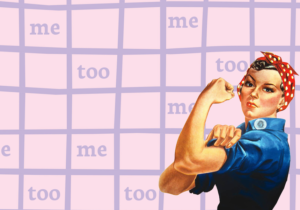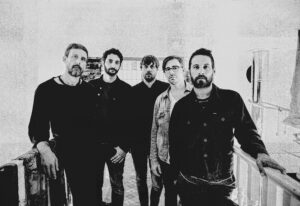Almost three decades have passed since Canada’s Deaf and hard of hearing community had its voice heard in parliament for the first time by one of their own. On November 21st, 1990, Gary Malkowski became the first deaf parliamentarian in the world to address a legislature in a signed language. With two interpreters standing at his side, he signed to the quietly reverent 130 members of the legislative chamber with eloquent precision. Both sides of the Speaker’s chair listened closely to his interpreters and watched as Malkowski articulated his political goals, intentionally defining his identity by drawing parallels between his own personal and professional achievements.
Despite challenges, Malkowski has thrived as a politician and advocate for the Deaf and hard of hearing community with little help from the hearing world. In the retelling of his life story, Malkowski brings to light the difficulties faced by many in the Deaf and hard of hearing community growing up. His story is an example of how one might overcome obstacles, but also serves to identify the importance of giving a child that is identified as Deaf or hard of hearing a first language like American Sign.
A new era should have been drawn in the sand on November 21st and you would think this momentous occasion would have sparked change but very little is still publicised about Malkowski or Deaf culture as a whole in the media today.
When Malkowski agreed to tell me his story, I was thrilled because very few people I interviewed were open to making their stories public due to fears of being ostracized from their own communities or even losing their jobs.
While the rift between the hearing and Deaf world is a complex subject that I don’t expect to fully address within this article, I do hope to provide more insight into bringing a first language like Sign to children that are identified as Deaf or hard of hearing in their early development.
The early years
Malkowski’s mother first discovered that her son might be deaf in a chance meeting with a truck driver that pointed it out to her in the spring of 1959. At 18 months old, Malkowski was taken to the audiologist and the driver’s suspicions were confirmed. His mother, as was the case for many concerned parents at the time, was advised to find a Deaf and hard of hearing program to help teach her son how to speak and listen. The audiologist explained to her that this would be the best choice for her if she wanted to ‘fix’ her son.
“They gave me a hearing aid. A big old box that you wore on your chest,” said Malkowski.
By the age of three, Malkowski began attending classes with 20 other kids, but communication, as one might expect, is difficult without any form of language.
One of the first memories he recalls from his early childhood is formed by the word “cookie”.
“Once you could say the word cookie, they would give you one,” said Malkowski. “But I really struggled with the word and never got one. Everybody else in my class did but I could never say it so I was never rewarded. It was a real struggle for me and so I would play.”
Because Malkowski was not able to speak or lip read by the age of five, it was decided that a mainstream program was not appropriate and so he attended Ernest C. Drury School for the Deaf which was then called The Ontario School for the Deaf, Milton. This was a turning point for him because he was finally in a place where all the kids he met were using sign language on campus.
“Whether it be dorms, the cafeteria, or playground, all of us were using sign language, and for me, it was invigorating to be able to have this new connection and make friends in that environment,” said Malkowski.
Yet, even though this new experience was thoroughly enjoyable in the playground, sign language was still not allowed in the classroom.
“When I think back, I remember telling the teacher I had to go to the washroom. I pointed down the hall and she refused to let me go until I was able to say the words – so of course, I ended up wetting my pants.”
At this time, there were six different streams at Ernest C Drury School for the Deaf. They ranged from classrooms meant for students that were determined to speak, write, and lip-read, to students that required 24-hour supervision because of their inability to speak or hear. He was placed closer to the bottom end of the spectrum because of his poor lip-reading skills.
As he got older, Malkowski continued in one of the more heavily supervised classrooms until one day a teacher came in that was proficient in sign language.
After a brief conversation using sign, the teacher was convinced that he had been placed in the wrong stream. The teacher asked the principal to set up a reassessment with the school psychologist but this time, an interpreter was asked to be present.
Malkowski’s initial psychological assessment had determined that he was mentally retarded, a slow learner, and had a mild intellectual delay. Just 15 years later, the new assessment declared that he was in fact at the opposite end of the spectrum with an above average level of intelligence.
Cochlear implants vs first language
About 80 percent of children that are born deaf have cochlear devices implanted in order to provide some sound in their first few years. Yet children that have not learned a first language early on, may not even become fluent in any language due to brain plasticity changes that occur in the first few critical years of life.
This is one of the reasons it is so important that children that are born deaf, learn American Sign Language or some other form of sign.
Without a first language to support them through their early development, research indicates that developments surrounding literacy, memory organization, and number manipulation can be highly affected.
Higher learning
After 15 years of being told that Malkowski was slow and required constant supervision, he was moved into a more sophisticated stream that incorporated advanced writing, a higher-level of reading, and homework assignments that were finally at a place to challenge his abilities.
“I remember one of my classmates teasing me and saying, ‘you should take the Gallaudet University entrance exam’”.
Founded in 1864 and located in Washington D.C., Gallaudet University is still the first and only university in the world that provides higher-education schooling specifically designed for Deaf and hard of hearing students.
In 1975, Malkowski decided to take the entrance exam, was accepted into the university, and began his academic career by the age of 17. Having never seen deaf teachers or deaf professionals in various fields such as law and psychology, Malkowski’s eyes were opened with a profound sense of freedom to the new idea that any future career was a possibility for him.
He was raised to believe that very little would be possible for him in this life and yet here he was, at an institution that provided him with a wealth of information, an abundance of resources, tutoring, and interpreters that could be used to assist with his studies.
“It completely shifted my world. Throughout my entire life, I was told that if you can’t speak or you can’t hear, you can’t be successful – yet here I was, at Gallaudet University and people were telling me you can believe in yourself.”
Malkowski went on to finish an undergraduate degree in social work and psychology, a Masters in Rehabilitation Counselling, and finally moved to Toronto to start what would become an illustrious career that would allow him to tackle issues and policies that have improved conditions for Canadians that are Deaf or hard of hearing. Becoming Canada’s first deaf parliamentarian was no small feat for a kid that was once diagnosed with a mental disability and referred to as a slow learner.
Support Services
Unlike in the United States, Canada’s educational system for the Deaf is considered quite far behind by many in the community in its development. However, steps are being taken as of late to provide more information and support to hearing parents with children that are born Deaf or hard of hearing.
“In general, Canada is in bad shape. While there are schools for the Deaf, the number of children that are applying for these programs are dwindling,” says Patrick Boudreault, a Deaf Associate Professor in the Department of American Sign Language and Deaf Studies at Gallaudet University.
According to the Ontario Ministry of Educational Provincial Schools Branch, the number of students attending provincial schools for the Deaf has decreased from approximately 3500 in the 1990s to about 650 in the fall of 2016.
The Canadian Association of the Deaf has stated that they understand the reservations that new hearing parents may have regarding losing their child to the Deaf community, but support services in the regular school system are still not meeting those needs.
Roughly 90 percent of children that are born Deaf or hard of hearing have “hearing parents who generally have little knowledge of or experience with early childhood hearing loss”. For this reason, organizations like the Canadian Association of the Deaf are working hard to provide hearing parents with more research and information about the benefits that having an initial first language can mean to their child.
Deaf culture, life, and politics
In many ways, there is a still a great ideological division between the Deaf community and the hearing world.
In order to better understand why much of this conflict exists, it is important to examine some of the ideologies and terminology that have begun to develop over the course of the last 20 to 30 years.
There are a few key terms that are widely used within the Deaf community that I had not heard before I began interviewing and researching for this article. The term “Deafhood” is a word that in its essence gathers together and helps to frame what is known about Deaf culture, life, and its politics. Paddy Ladd, a renowned Deaf scholar, author, and academic first introduced it as a concept in 1993 in order to achieve unity amongst the Deaf community.
It has since made its way into various academic teachings and cultural expressions that have furthered ideologies associated with the colonization of the Deaf community by the hearing culture that surrounds it. This term is invariably tied to a second concept that is arguably as important to understand when educating oneself on the Deaf community, which is the term “Audism”.
Audism, unlike Deafhood, was coined much earlier and as far back as the mid-1970s by Deaf scholar Tom Humphries in a desperate cry to the world for a term that would represent the discrimination of Deaf people everywhere. Humphries defines audism as a concept that “appears in the form of people who continually judge deaf people’s intelligence and success on the basis of their ability in the language of the hearing culture. It appears when the assumption is made that the deaf person’s happiness depends on acquiring fluency in the language of the hearing [and]…appears when Deaf people actively participate in the oppression of other Deaf people by demanding of them the same set of standards, behavior, and values that they demand of hearing people”.
New hope
While there is talk about the Liberal government in Canada looking into the possibility of adding American Sign Language into the mix as an official language, policies associated with normalizing cochlear implants as a primary option to new hearing parents and the lack of adequate education regarding what it means to introduce sign language early in a child’s development is still of grave concern amongst the Deaf and hard of hearing community.
As new studies emerge and a greater understanding of the benefits associated with adopting sign language at an early age come to light, it is important that stories like Gary Malkowski’s are not forgotten and over time, help to inspire future generations and new parents to make more informed decisions.









